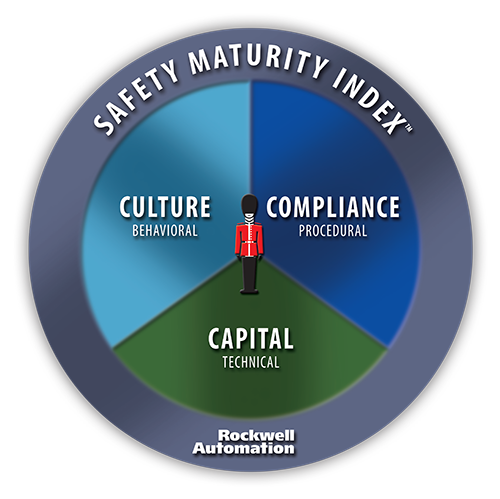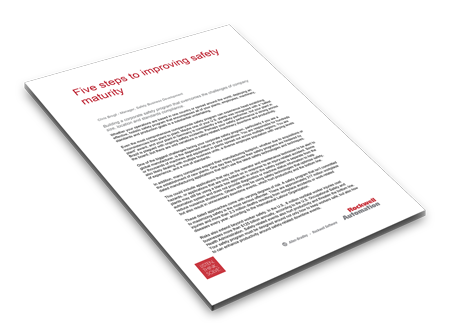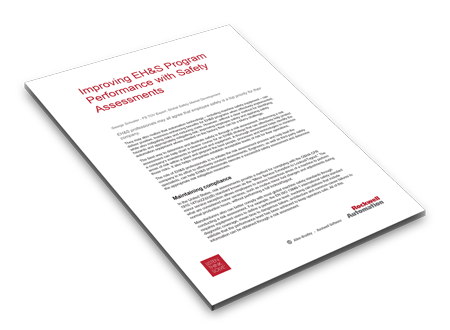Key Considerations for Designing a Manufacturing Safety System
- March 21, 2019
- Best Practices
- Automation
 WHY A MANUFACTURING SAFETY SYSTEM IS IMPORTANT
WHY A MANUFACTURING SAFETY SYSTEM IS IMPORTANT
Implementing and maintaining a manufacturing safety system at your facility is key to protecting your people and overall total cost. With a properly designed manufacturing safety system you can reduce the risk and exposure of your people to potential hazardous situations, decrease the potential for costly downtime, as well as meet safety standard requirements. Before designing a manufacturing safety system, you will need to take into consideration a few important factors that play a role in designing your system.
Every 15 seconds, somewhere in the world, 160 workers have a work-related accident. Every 15 seconds, somewhere in the world, a worker dies from a work-related accident or disease.
WORKFORCE AVAILABILITY CONSIDERATIONS
The global workforce is evolving. In the U.S. alone, the average age of a highly skilled manufacturing worker is 56, which is estimated to grow to 115 million workers by 2020. With the Internet of Things and evolving technology come new demands for the workforce – learning new skills to implement the technology and take advantage of it. And these skills are not easily found in today’s workforce.
UNDERSTANDING THE THREE C’S OF SAFETY – CULTURE, COMPLIANCE AND CAPITAL
The best-in-class manufacturers that address manufacturing safety in three key areas – culture (behavioral), compliance (procedural) and capital (technical) – have fewer safety incidents and significantly improved operational performance, achieving five to seven percent higher in overall equipment effectiveness. Building a cross-functional team to evaluate how you are doing in these three areas is a good first step when looking to build your manufacturing safety system.
IDENTIFY YOUR SAFETY MATURITY INDEX™
Once your manufacturing safety team is in place, it’s important to understand how your company is performing in these three areas: safety culture, compliance and capital. To help you evaluate your company’s performance, Rockwell Automation developed the Safety Maturity Index tool. This tool allows you to see where you are doing well, identifies areas of opportunity, and will help provide you direction as you build your manufacturing safety culture, compliance and capital.
PERFORM A SAFETY RISK ASSESSMENT
After your manufacturing safety strategy is identified, it’s important to understand how your operating machines are conforming to these standards. An assessment helps identify the areas of risk within your facility and pinpoint the best people, processes and technologies to minimize those risks. It will also help you identify acceptable levels of risk for your operations.
IMPLEMENTING A MANUFACTURING SAFETY SYSTEM
Knowing your Safety Maturity Index and identifying acceptable levels of risk in your facility allows you then to properly design specifications. You’ll need to determine the hardware and safety circuit levels you will use, how you will use emergency stops and contemporary safety strategies to meet your safety standard requirements.
HOW VAN METER CAN HELP
Implementing manufacturing safety at your facility is necessary. It can be difficult financially as well as how to identify areas of opportunity within your facility. At Van Meter, we have a team of certified TÜV Rheinland Functional Safety Engineers and Technicians to assist you on your manufacturing safety journey. We can help you understand why safety is important, recognize hazardous situations and can consult on safety design approaches based on safety standards. Safety is ultimately your company’s decision and we are here to support you along the way.
Take action to protect your people and maximize productivity. Call a Van Meter expert today at 1-800-247-1410 to schedule time to discuss how we can help you become safer and more productive.
 Whitepaper - Workforce Availability: Protecting Your Investment in Productivity and Safety Amid an Evolving Global Workforce (PDF)
Whitepaper - Workforce Availability: Protecting Your Investment in Productivity and Safety Amid an Evolving Global Workforce (PDF) Whitepaper - Safety Maturity: Three Crucial Elements of Best-in-Class Safety (PDF)
Whitepaper - Safety Maturity: Three Crucial Elements of Best-in-Class Safety (PDF) Whitepaper - Five steps to improving safety maturity (PDF)
Whitepaper - Five steps to improving safety maturity (PDF) Whitepaper - Improving EH&S Program Performance with Safety Assessments (PDF)
Whitepaper - Improving EH&S Program Performance with Safety Assessments (PDF)